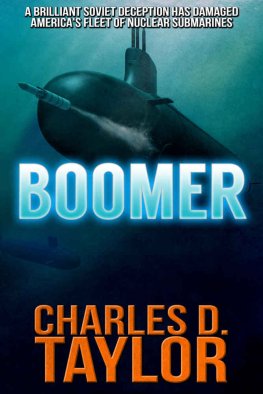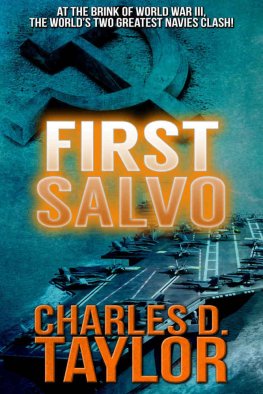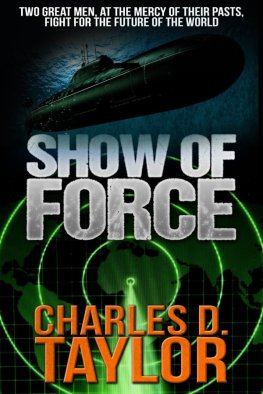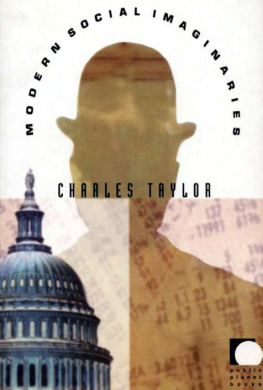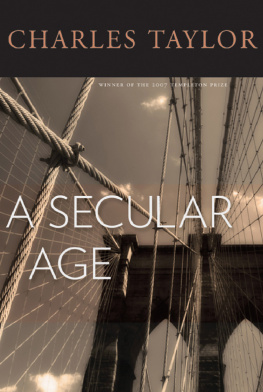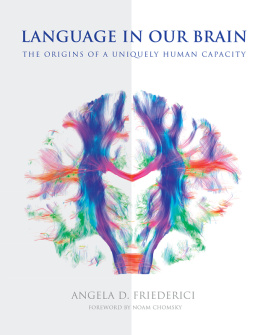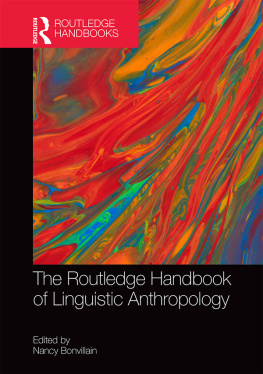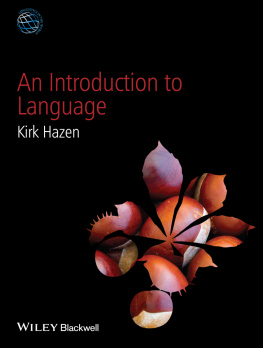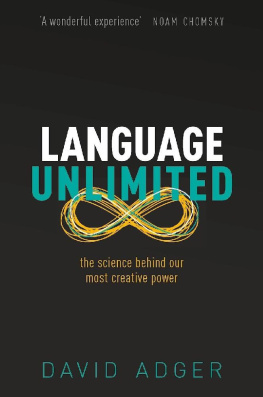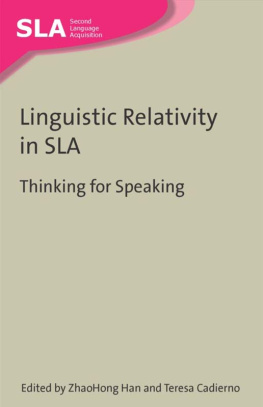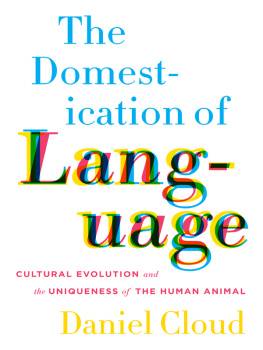The Language Animal
The Full Shape of the Human Linguistic Capacity
CHARLES TAYLOR
THE BELKNAP PRESS OF HARVARD UNIVERSITY PRESS
Cambridge, Massachusetts, and London, England
2016
Copyright 2016 by the President and Fellows of Harvard College
All rights reserved
Jacket image: The Terrace at the Garden at Les Lauves 1902-1906, watercolor over graphite (detail), by Paul Czanne. The Morgan Library and Museum/Alamy
Jacket design: Tim Jones
978-0-674-66020-5 (alk. paper)
978-0-674-97027-4 (EPUB)
978-0-674-97026-7 (MOBI)
The Library of Congress has cataloged the printed edition as follows:
Taylor, Charles, 1931 author.
The language animal : the full shape of the human linguistic capacity / Charles Taylor.
pages cm
Includes bibliographical references and index.
1. Language and languagesPhilosophy. 2. LinguisticsPhilosophy. 3. Cognition. I. Title.
P107.T39 2016
401dc23
2015034224
To my grandchildren
Francis and Annik
Alba and Simone
Sabah and David
Contents
This is a book about the human linguistic capacity. In it I attempt to show that this is more multiform than has usually been supposed. That is, it includes capacities for meaning creation which go far beyond that of encoding and communicating information, which is too often taken as its central form.
My inspiration has been the views on language developed in the 1790s in Germany, the time and place where what we think of as German Romanticism flowered. The main theorists I have drawn on are Hamann, Herder, and Humboldthence my name for the theory I have taken from them, the HHH.
The contrast case to this outlook is one which developed in the great thinkers of early modernity, rationalist and empiricist, which were also responsible for the modern epistemological theories which grew out of, and sometimes partly against, the work of Descartes. The main early figures in this tradition which I cite here are Hobbes, Locke, and Condillac. Hence the shorthand title HLC.
This theory seems impossibly unsophisticated to thinkers in the twentieth and twenty-first centuries, influenced as we have all been by Saussure, Frege, and to some extent Humboldt. But certain of its key assumptions have survived into analytic post-Fregean philosophy, as well as some branches of cognitive theory.
So an important part of my task in this book has been to refute the remaining fragments of the legacy of the HLC, by developing insights out of the HHH. The result (I hope) is a much more satisfactory, and therefore varied (if less tidy), account of what the human linguistic capacity consists in.
My original intention in embarking on this project was to complement this development of the Romantic theory of language with a study of certain strands of post-Romantic poetics, which I see as closely linked. I started on this in the late 1980s and early 1990s, and in face of numerous self-interruptions, I have only got as far as completing the first part, plus a scattering of studies which could help constitute the second.
I have therefore decided to publish this book on the linguistic capacity, and to continue my work on the Romantics in order to complete the second part (I hope), as a companion study to this one. I will from time to time in this book indicate what that second study may contain. But I hope that this work will be sufficiently interesting on its own to justify its separate publication.
I have greatly benefitted from discussions with a host of thinkers, mainly from the network around the Centre for Transcultural Studies, in particular, Akeel Bilgrami, Craig Calhoun, Dilip Gaonkar, Sean Kelly, Benjamin Lee, and Michael Warner.
I would also like to thank Muhammad Velji for his great work in helping to prepare the manuscript for publication, and in pointing out lacunae that needed filling, particularly in finding adequate English translations of quotes in other languages, not to speak of other improvements; finally I owe him thanks for drawing up the index.
1
How to understand language? This is a preoccupation going back to the very beginning of our intellectual tradition. What is the relation of language to other signs? To signs in general? Are linguistic signs arbitrary or motivated? What is it that signs and words have when they have meaning? These are very old questions. Language is an old topic in Western philosophy, but its importance has grown. It is not a major issue among the ancients. It begins to take on greater importance in the seventeenth century, with Hobbes and Locke. And then in the twentieth century it becomes close to obsessional. All major philosophers have their theories of language: Heidegger, Wittgenstein, Davidson, Derrida, and all manner of deconstructionists have made language central to their philosophical reflection.
In what we can call the modern period, from the seventeenth century, there has been a continual debate, with philosophers reacting to and feeding off each other, about the nature of language. I think we can cast light on this debate if we identify two grand types of theory. I will call the first an enframing theory. By this I mean that the attempt is made to understand language within the framework of a picture of human life, behavior, purposes, or mental functioning, which is itself described and defined without reference to language. Language is seen as arising in this framework, which can be variously conceived as we shall see, and fulfilling some function within it, but the framework itself precedes, or at least can be characterized independently of, language.
The other type of theory I want to call constitutive. As this word suggests, it is the antitype of the enframing sort. It gives us a picture of language as making possible new purposes, new levels of behavior, new meanings, and hence as not explicable within a framework picture of human life conceived without language.
These terms mark a major issue at stake between the two theories. But as it turns out, they are divided on a number of other major questions, and the two approaches can be contrasted on a number of other dimensions as well, and so they are sometimes referred to as the designative-instrumental and the constitutive expressive theories respectively. And besides this, they even end up differing on the contours and limits of what they are trying to explain, viz., language; as well as on the validity of atomistic versus holistic modes of explanation. They belong, in fact, to very different understandings of human life. But we have to enter the labyrinth at some point, and I will do so at first through this contrasting of enframing versus constitutive, and gradually connect up with the other dimensions of controversy later.
2
The classical case, and most influential first form of an enframing theory, was the set of ideas developed from Locke through Hobbes to Condillac. I have discussed this in Language and Human Nature. Briefly, the Hobbes-Locke-Condillac (HLC) form of theory tried to understand language within the confines of the modern representational epistemology made dominant by Descartes. In the mind, there are ideas. These are bits of putative representation of reality, much of it external. Knowledge consists in having the representation actually square with the reality. This we can only hope to achieve if we put together our ideas according to a responsible procedure. Our beliefs about things are constructed; they result from a synthesis. The issue is whether the construction will be reliable and responsible or indulgent, slapdash, and delusory.
Language plays an important role in this construction. Words are given meaning by being attached to the things represented via the ideas which represent them. The introduction of words greatly facilitates the combination of ideas into a responsible picture. This facilitation is understood in different ways. For Hobbes and Locke, they allow us to grasp things in classes, and hence make possible synthesis wholesale where nonlinguistic intuition would be confined to the painstaking association of particulars. Condillac thinks that the introduction of language gives us for the first time control over the whole process of association; it affords us dominion over our imagination [
Next page

